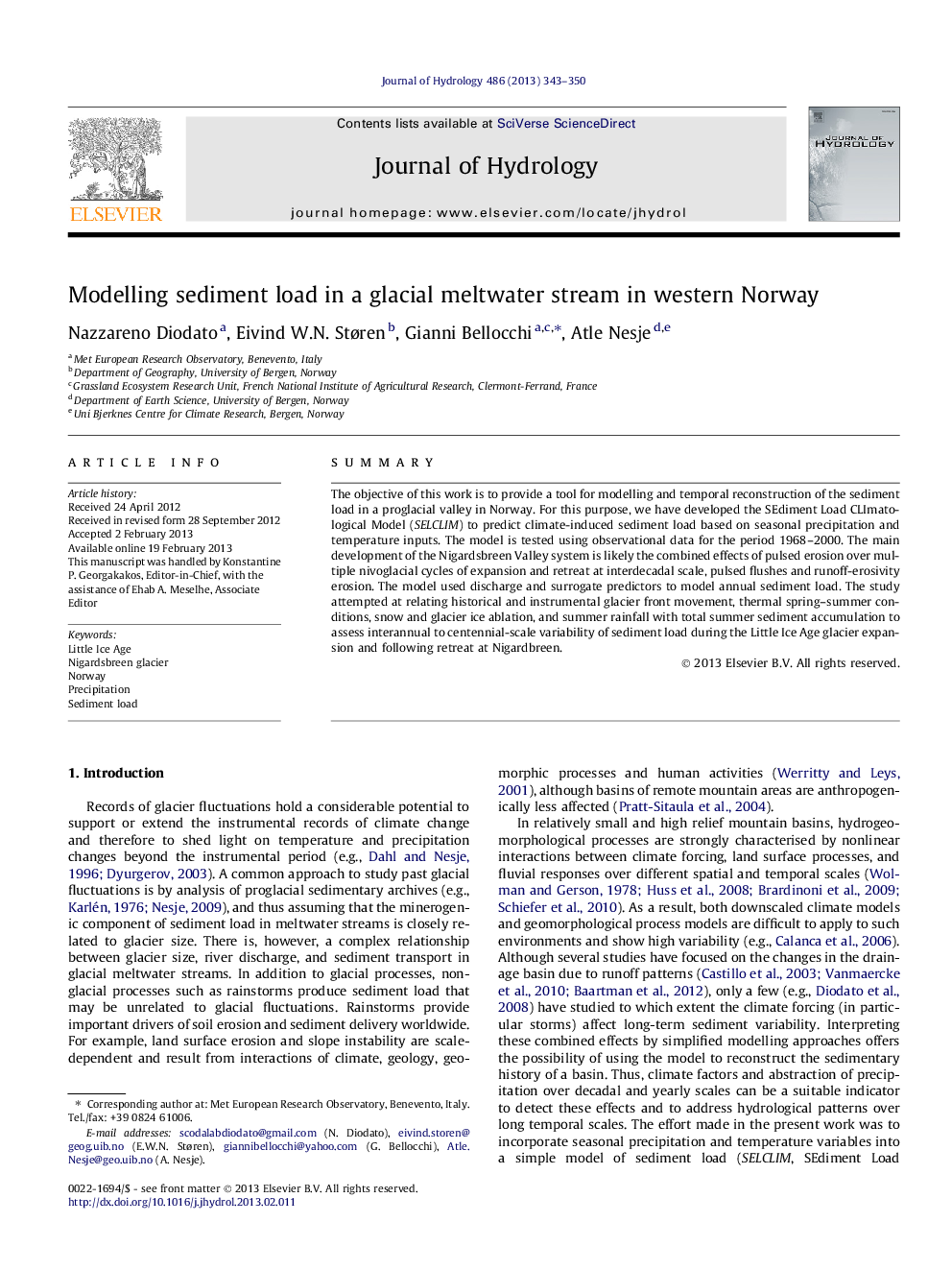| Article ID | Journal | Published Year | Pages | File Type |
|---|---|---|---|---|
| 4576402 | Journal of Hydrology | 2013 | 8 Pages |
SummaryThe objective of this work is to provide a tool for modelling and temporal reconstruction of the sediment load in a proglacial valley in Norway. For this purpose, we have developed the SEdiment Load CLImatological Model (SELCLIM) to predict climate-induced sediment load based on seasonal precipitation and temperature inputs. The model is tested using observational data for the period 1968–2000. The main development of the Nigardsbreen Valley system is likely the combined effects of pulsed erosion over multiple nivoglacial cycles of expansion and retreat at interdecadal scale, pulsed flushes and runoff-erosivity erosion. The model used discharge and surrogate predictors to model annual sediment load. The study attempted at relating historical and instrumental glacier front movement, thermal spring–summer conditions, snow and glacier ice ablation, and summer rainfall with total summer sediment accumulation to assess interannual to centennial-scale variability of sediment load during the Little Ice Age glacier expansion and following retreat at Nigardbreen.
► We develop a sediment load model based on seasonal precipitation and temperature (SELCLIM). ► Sediment yield records of 1968–2000 in the Nigardsbreen (Norway) meltwater stream are used. ► SELCLIM estimations compare well against observed records. ► SELCLIM may be liable to spatial generalisation in Northern Europe. ► SELCLIM can be used for historical reconstructions of sediment loads.
